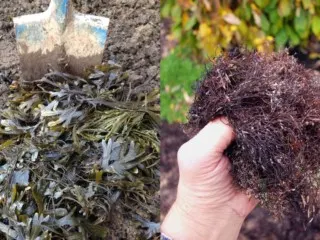We all could certainly do with less pests in our lives, especially the type that bite, sting, and raid your pantry. Getting rid of household pests is an age old problem with a lot of varied solutions.
Our favorite solution for getting rid of bugs and rodents is using pest repelling plants to ward them off. The best thing about using plants to repel pests is it’s 100% natural, so there’s no harm, and you add more beauty to your garden.
Repelling pests naturally – why do it?
There’s a reason environmentalists are pushing for greener living. Using natural solutions to our problems is better for the planet, better for your family, and usually, better for your wallet.
Repelling pests naturally will not only save your family from the terrors of rodents and biting insects, it will save you the money of hiring exterminators, and prevent potential health problems from their sprays.
The Dangers of Pesticides
There’s no sugar coating it, common pesticides like insecticides and rodenticides are poison. They’re poison for the insects, and they’re poison for your family.
Insecticides are known to destroy ecosystems and have devastating effects on good insects, killing them right along with the bad insects.
Mice that are killed with poison are frequently eaten by wildlife such as owls, hawks, and cats, which poisons them as well.
Using plants to repel pests naturally means your home and yard will be free from poisons, good insects like butterflies and bees can go about their business, and bad ones like mosquitoes and flies will be driven from your property.
Related Reading: 9 Natural Ways To Repel Mosquitoes And 4 Methods That Really Don’t Work
How to use plants to repel pests
1. Plant live plants around your property
Landscaping isn’t only for good looks, it can help in so many ways.
The best place for pest repelling plants is wherever their meal of choice happens to be. That may be in and around your home, around the chicken coop, or in the vegetable garden.
Planting pest repellant plants around your property not only helps keep pests away from those zones, you can use the leaves and flowers to ward them off elsewhere too.
2. Use the leaves or flowers in sachets, sprays, and infusions
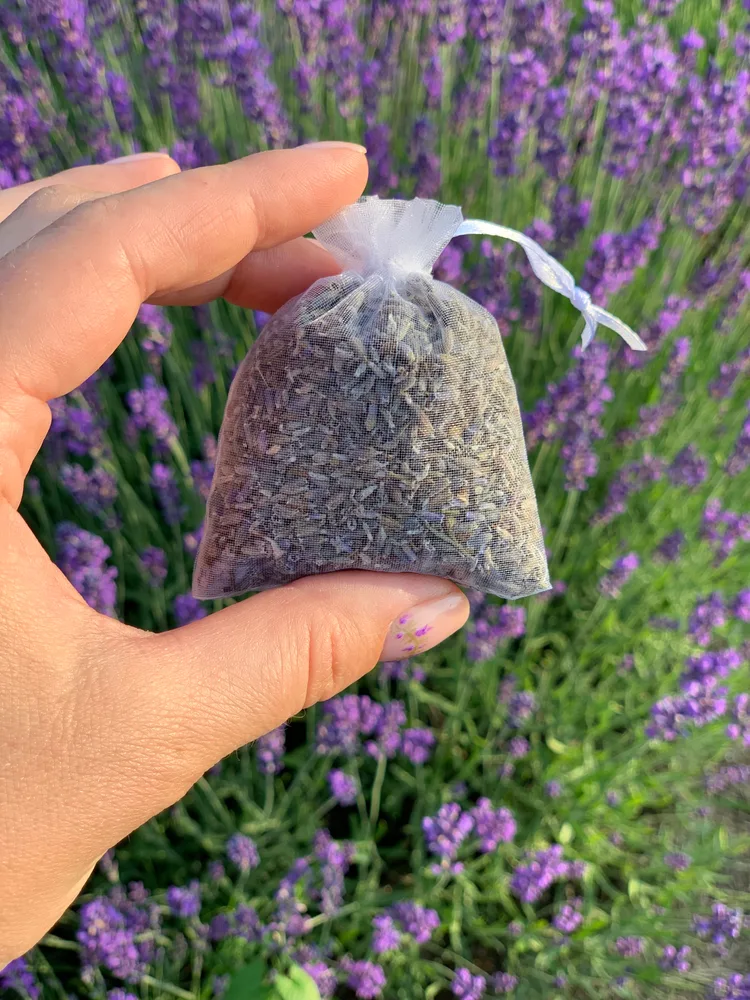
Dehydrate the leaves and/or flowers from pest repelling plants to make a portable pest repellent that can be used wherever you’re having trouble.
Dried herbs and flowers can be just as effective at repelling pests as live ones. Dried herbs can be hung near windows, placed in sachets inside drawers and cupboards, or used in decorations like wreaths and bouquets. Lavender flowers, in particular, make for beautiful pest repellant home decor.
These plants can also be used fresh. Many people take the freshly picked leaves and rub them between their hands to release the oils, then spread them on exposed skin to ward off bugs.
Another great way to use the fresh leaves is to infuse them in oil, then use the oil on your self or around the house to keep insects away.
Yet another way to use fresh herbs is to make a tincture using alcohol or vinegar. This can be poured into a spray bottle for easy homemade bug spray.
Where to plant pest repelling plants
Where to place these plants is entirely dependent on where you’re in need of pest repelling. If you’re dealing with insect pests eating your garden plants, planting them around the perimeter or even inside the garden will help.
If you’re having issues with mosquitoes or flies on your property, planting repelling plants around the perimeter as well as in pots and window boxes near the house will help.
Some of these plants can even be kept in pots indoors all year round to help repel insects and rodents from entering your house.
The best places for pest repellent plants:
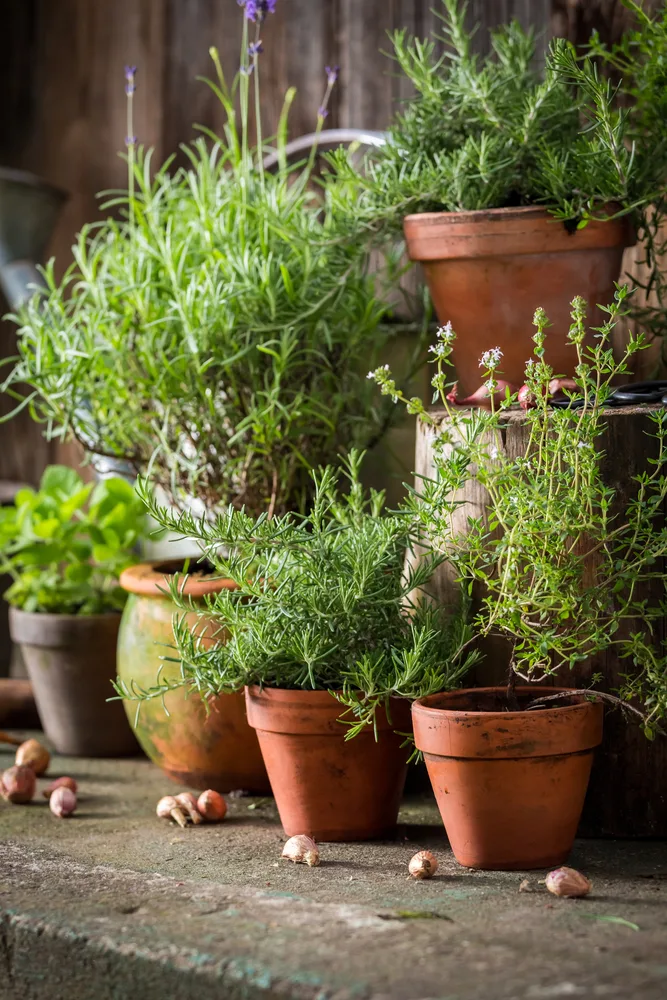
Which plants will repel pests?
1. Lavender

Repels mice, moths, and beetles.
This beautiful and useful perennial is disliked by most insects and rodents. Plant lavender in your herb garden once, and it will come back year after year to do the work of driving pests away.
Lavender can be harvested, dried, and hung around the home, or made into herb sachets and tucked into drawers and cupboards to keep away moths and other pests.
2. Marigolds

Marigolds are well known for their pest repellent stink. This plant repels squash bugs, tomato worms, and mosquitoes, among others.
Gardeners have long used marigolds in or around their gardens. They make an excellent companion plant to squash and tomatoes, as they tend to have lots of issues with insect pests.
Planting marigolds has also been known to deter rabbits and deer from visiting your garden.
Marigolds can also be planted in window boxes outside of your windows to keep out flies and mosquitos.
If you want to plant marigolds from seed this year, be sure to start them indoors super early, because they take a long time to germinate.
3. Catnip
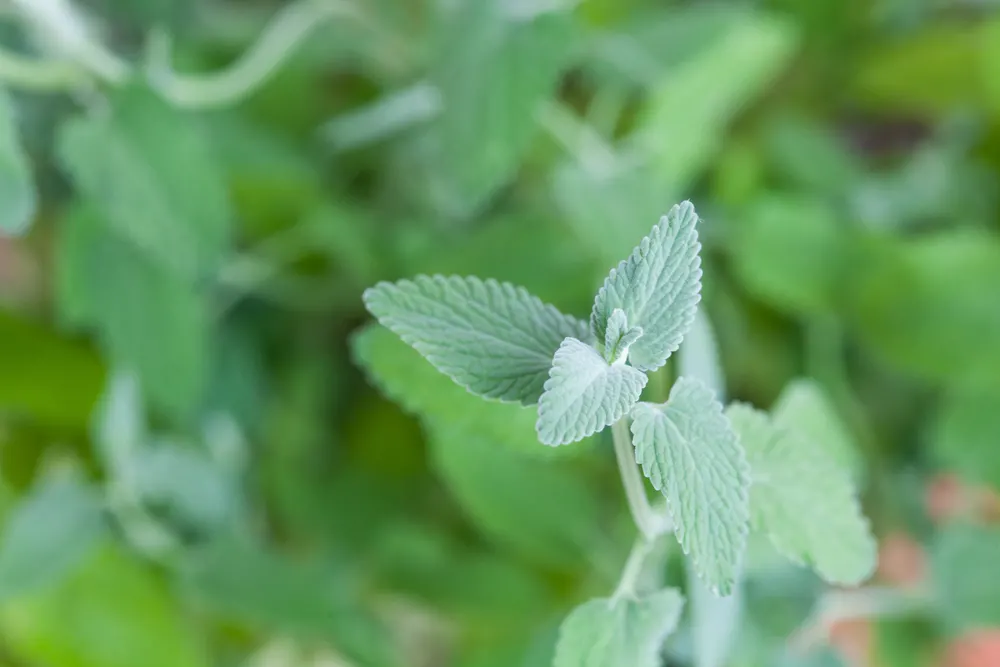
Cats love catnip, but most other creatures don’t. Catnip is a member of the mint family, and is a fellow perennial. Be sure to plant this crop in pots, or in an area that you don’t mind it spreading, because it sure will.
Catnip is one of the best mosquito deterrents, and it’s all natural. Rub the leaves directly on your skin, or use it in a homemade bug spray to drive away these biting pests.
4. Garlic
Most bugs simply detest the smell of garlic, and will avidly avoid any area in which it’s planted. Garlic is most effective at repelling insects that attack plant roots and tubers, as well as nasty aphids.
We like to plant garlic around the perimeter of our garden to keep pests at bay, and when the gardening season is over, we dig it up and enjoy it in the kitchen.
5. Chrysanthemums
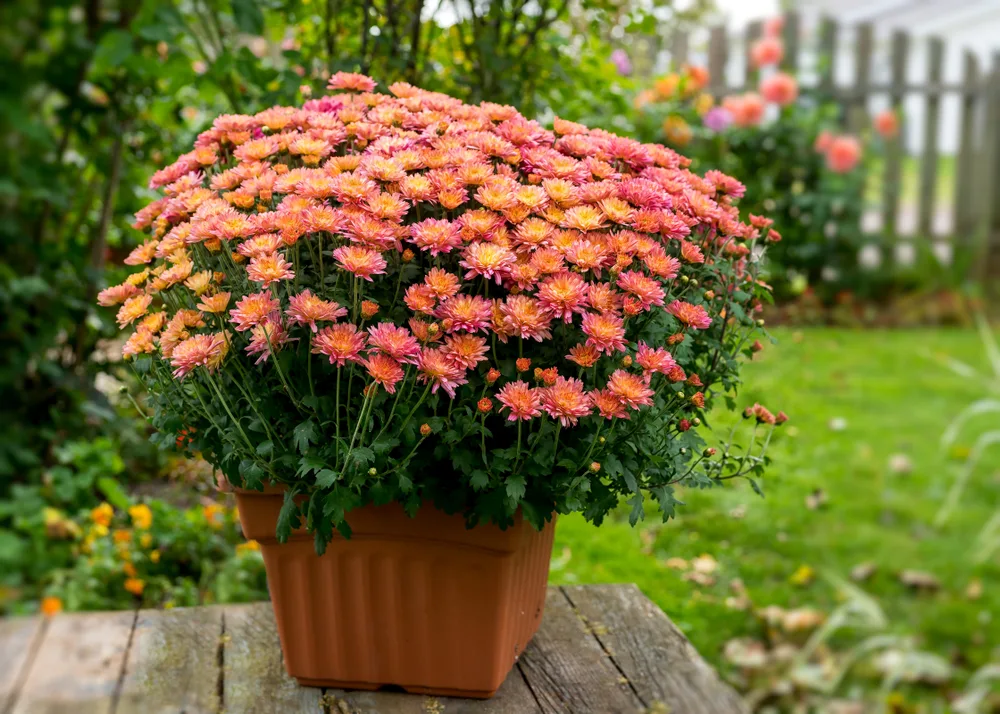
These are the ultimate in insect repelling plants. Chrysanthemums drive away mites, lice, ants, beetles, ticks, roaches, and even bed bugs.
Chrysanthemums, or mums for short, naturally produce pyrethrin, a neurotoxin that repels insects. Mums look beautiful when interspersed with garden veggies, and their presence will ward of pests like nobody’s business!
6. Citronella grass

This grass (Cymbopogon nardus) holds the ingredients of those classic pest repellents: citronella candles.
Plant citronella grass near thresholds to your house to keep out flies and mosquitoes.
7. Lemongrass
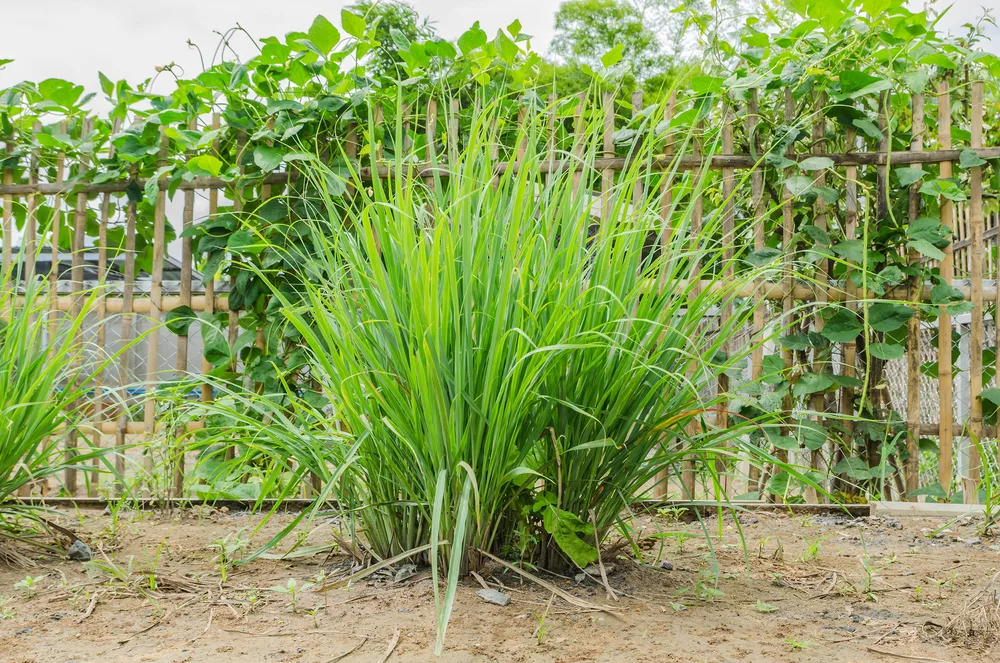
Can’t find citronella grass in your area? Plant its cousin, lemongrass, instead.
Lemongrass holds many of the same qualities as citronella, but is usually easier to find at your local plant store.
When planting lemongrass, be sure to give it plenty of space. This giant can grow to 3-6 feet tall!
Other ways to naturally repel pests:
Install a bat house to decrease mosquitoes
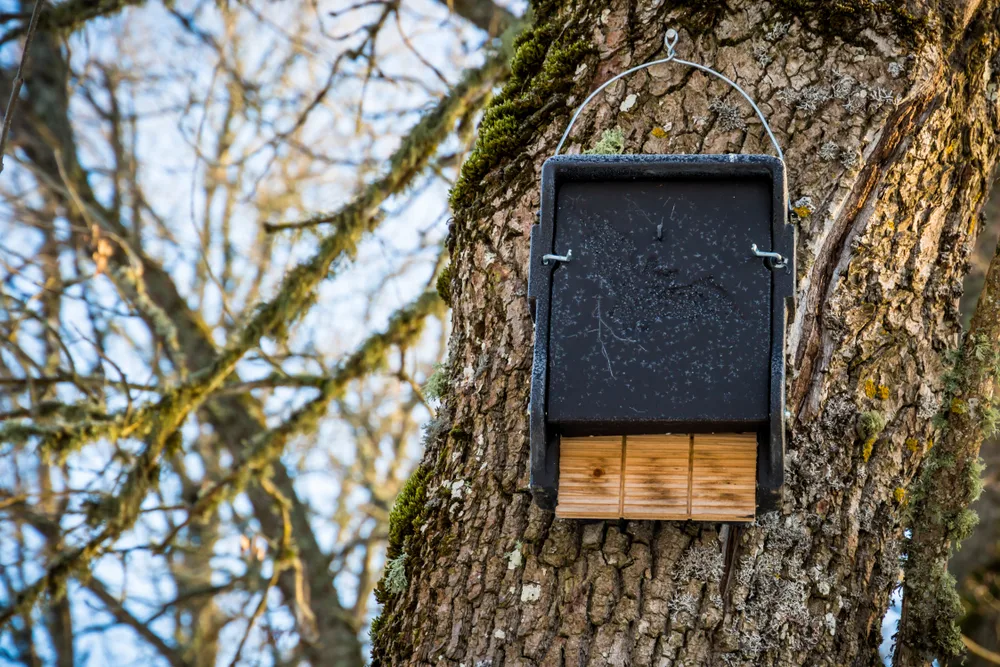
I know encouraging bats to live on your property can be a bit… nightmarish. But the truth is, bats are one of the top natural pest control measures. A single bat can eat between 6,000 and 8,000 insects each night, including lots of nasty pests like mosquitoes.
Putting a bat house on your property is inexpensive, easy, and can make a big difference in your mosquito populations.
You could even try making your own bat house. Fellow Rural Sprout contributor, Cheryl, has a great tutorial for you here.
Keep a cat, or several, to help kill mice and rats
Keeping a cat in your home has many benefits. The companionship is certainly wonderful, but an added bonus is having your very own hunter in the house. Cats are excellent at hunting down mice, rats, and chipmunks living in your home.
Keep all food secured in pest proof containers
The number one way to get rid of rodents is to stop feeding them. The only reasons mice, rats, and chipmunks like to hang around in homes and barns is because of the free access to food.
Secure all food in glass, thick plastic bins, or metal containers to keep rodents from having a feast. They’ll find another home as soon as the free buffet disappears.
Meredith Skyer is a writer, artist, and homesteader residing in Western New York with
her husband and menagerie of farm critters.
She has spent the last 12 years learning and implementing a myriad of homesteading
skills, specializing in growing food and animal husbandry. Her biggest passion is working
in conjunction with the natural world to harvest healthy, organic food from her own backyard.
Meredith is a freelance writer and founder of Backyard Chicken Project, a place for crazy chicken
people to gather, learn, and share in their love of chickens. She also contributes articles to
Mother Earth News Online, From Scratch Magazine, and Grit.
Meredith works from her woodland homestead where she spends her days writing,
creating animal-inspired art, and chasing after her flock of chickens.
You can visit her at www.backyardchickenproject.com
Related:






